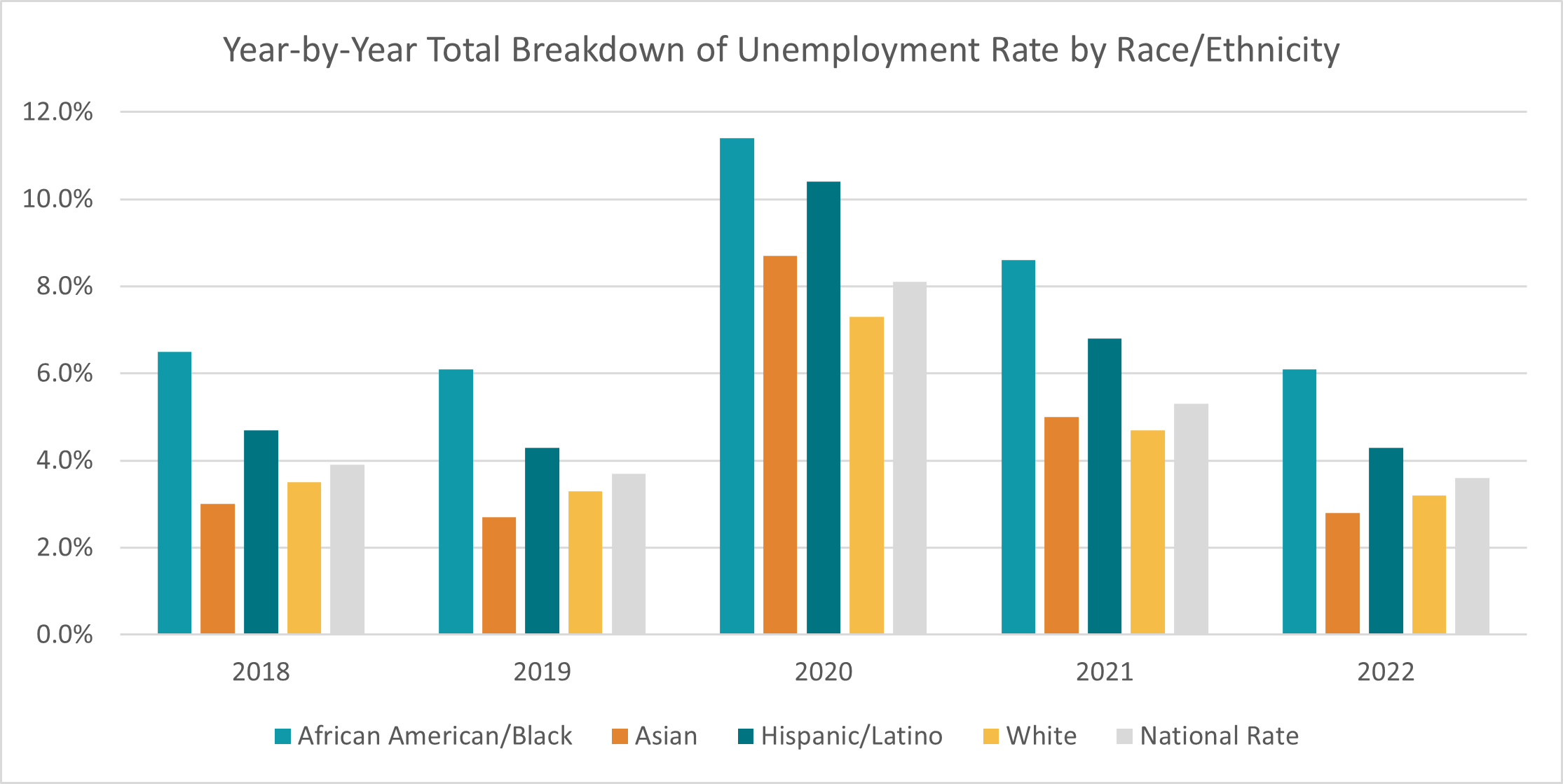Unemployment rate
Measure Overview
The COVID-19 pandemic significantly impacted the U.S. unemployment rate, which reached 14.8% in April 2020—the highest rate seen since 1948 when unemployment data collection first began. However, estimates for 2021 and 2022 indicate that the U.S. labor force is recovering from the pandemic’s initial disruption to the labor market, with national and state-level unemployment rates returning to pre-pandemic levels. Joblessness can have catastrophic effects on the lives of individuals and families, including home foreclosure, food insecurity, and delayed or foregone medical care. It is therefore critical to monitor unemployment statistics in the U.S. to better understand which demographic groups disproportionately experience joblessness and to formulate strategies that address unemployment disparities.
State Health Compare presents annual, state-level unemployment data based on estimates from the Bureau of Labor Statistics. Data are available beginning in the year 2000 and can be broken down by race/ethnicity (African-American/Black, Asian, Hispanic/Latino, and White).
Generate customized graphics using this data by selecting one of the options below.
Related Products

Unemployment Rate Trends of the Past 5 Years: Pre-, Mid-, and Post-Pandemic (State Health Compare Data Highlight)
Knowing that unemployment affects health and health care access, we wanted to understand how the pandemic could have affected unemployment rates. We also wanted to determine what progress has been made in recovery post-pandemic. To do this, SHADAC used State Health Compare tool to look at unemployment data pre- (2018-2019), mid- (2020), and post-pandemic (2021-2022).
